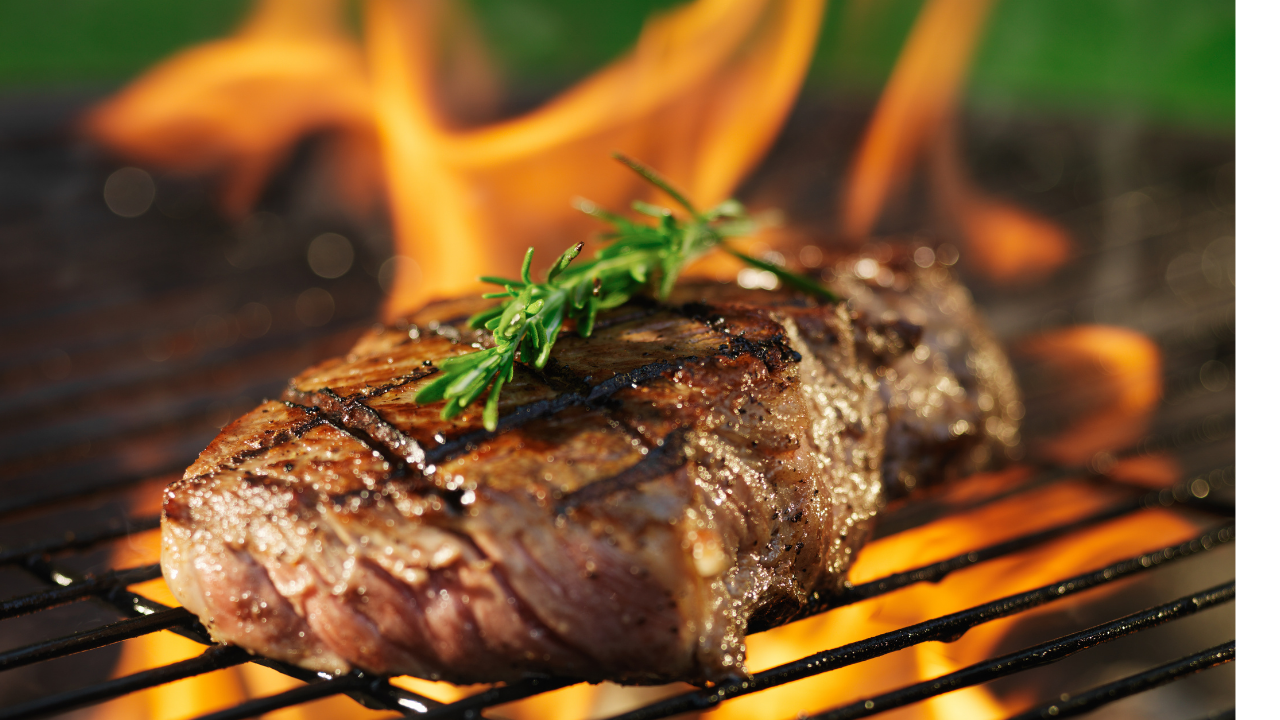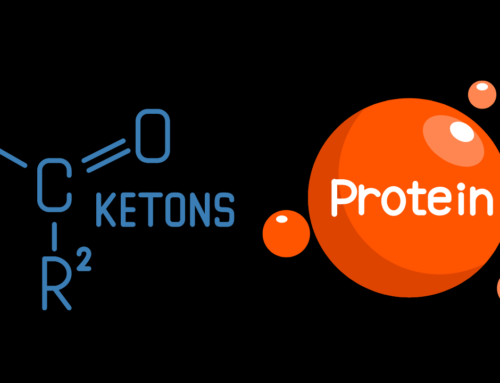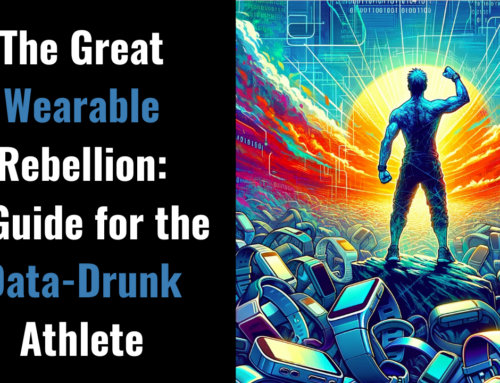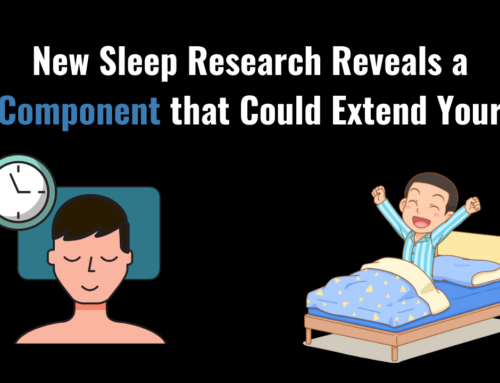I got this question last week in response to my protein series where I discussed my fav is a wood-smoked steak, reverse-seared at high heat at the end, with a nice Guinness coffee nitro stout.
“Aren’t’ you concerned about HCAs from grilling?”
To which I replied
“Obviously not”
Hahaha.
While it is true that HCAs (heterocyclic amines) appear to be cancer-causing agents, you don’t need to freak out about it.
I admit that the first time I read that research over 13 years ago, I did freak out and went on a terror of boiling all my meat to reduce HCA consumption.
You know what happened?
I hated every meal I ate for a week. Granted my spices were limited at the time for sure, but eating became a ton of work.
I white-knuckled it for a full week and then tossed in the towel.
Screw this, I guess I will die a year earlier. I am totally fine with it at this point.
Everyone has to make an educated risk about lots of things in life.
Driving your car to work is a risk. Over 33,000 people, unfortunately, died in motor vehicle accidents in 2019, which is horrible; yet does not deter most people from driving.
“There were 33,244 fatal motor vehicle crashes in the United States in 2019 in which 36,096 deaths occurred. This resulted in 11.0 deaths per 100,000 people and 1.11 deaths per 100 million miles traveled” Click here for source.
Driving is also a risk you grew up with, so it is “baked into” most of your life now and accepted.
Lifting heavy-ass weights has a risk to it.
Doing a 550 lb Dinnie lift that is a partial deadlift from rings with torso rotation and t-spine flexion will give Dr Stu McGill heart failure. Yet it is one of my goals to lift the actual 734 lb Dinnies and I believe it can be done in a safer manner.
Boosting 20 feet up in the air to hang out for 6 -10 seconds suspended by 100 feet of razor-sharp line attached to an upside down parachute looking thing is not the safest thing in the world to do; but when you land it the feeling is amazing.
Fromvan Bergen, C. J., 2016:
“A review of the literature identified an overall injury rate of 5.9 to 7.0 injuries per 1000 noncompetitive kitesurfing hours( Bourgois JG). A prospective kitesurf study showed an injury rate of 7 injuries per 1000 h of practicing the sport (Nickel C). This rate is the same as that found for kitesurfing in our retrospective study”
Statistically speaking, the risk of injury is still higher from driving than kiteboarding and lifting.
From a systematic review by Aasa U et al. in 2017:
“The injury incidence in weightlifting was 2.4–3.3 injuries/1000 hours of training and 1.0–4.4 injuries/1000 hours of training in powerlifting. Only one retrospective study had analysed possible risk factors.”
I am not going into either event half-cooked and always respect the elements, check my gear, go out with friends on the water, etc.All things to drive the risk as low as possible – however, it will never be zero.
There is also a massive risk of not doing anything. Risk of cardiovascular disease skyrockets if your glute max turns into a couch cushion, you can barely bend over and your VO2 max is single digits. That is a massive risk.
From Benjamin EJ,et al. 2019:
“Cardiovascular disease (CVD) remains the leading cause of death in the United States, responsible for 840,768 deaths (635,260 cardiac) in 2016.”
Social factors are also huge. Loneliness is a large risk that few talk about.
“Poor social relationships (characterized by social isolation or loneliness) was associated with a 29% increased risk of heart disease and a 32% increased risk of stroke. Loneliness was associated with higher rates of depression, anxiety, and suicide.”
One of the aspects I love about kiteboarding is spending time outside in nature, at cool locations, and around a bunch of people that love to have fun. Kiteboarding is not super easy to learn and it is a method to weed out asshats because everyone gets humbled learning and still gets their glute max served up to them on a wet silver platter at times. It is part of the sport. This keeps the asshat to fun people ratio very acceptable. Find a community and be a part of it. You will feel better and improve your health.
In the end, if HCAs are going to take me down via a very small risk based on in-vitro and epi data, I am ok with it. Again, nobody wishes ill on any; but control what you can control. Adding fruits and veggies plus marinates to meat reduces and counteracts the negative effects of HCAs to a large degree.
Pick your poison, reduce risks as low as possible and accept the consequences. Living in a stress-free bubble has massive consequences too.
Dr Mike
Nerd Fuel:
Aasa U, Svartholm I, Andersson F, et al “Injuries among weightlifters and powerlifters: a systematic review”British Journal of Sports Medicine 2017;51:211-219.
Benjamin EJ, Muntner P, Alonso A, et al. Heart Disease and Stroke Statistics-2019 Update: A Report From the American Heart Association. Circulation 2019;Jan 31:[Epub ahead of print].
Bylsma, L. C., & Alexander, D. D. (2015). A review and meta-analysis of prospective studies of red and processed meat, meat cooking methods, heme iron, heterocyclic amines and prostate cancer. Nutr J, 14, 125. doi:10.1186/s12937-015-0111-3
Bourgois JG, Boone J, Callewaert M, Tipton MJ, Tallir IB. Biomechanical and physiological demands of kitesurfing and epidemiology of injury among kitesurfers. Sports Med. 2014;44:55–66
Chen, X., Jia, W., Zhu, L., Mao, L., & Zhang, Y. (2020). Recent advances in heterocyclic aromatic amines: An update on food safety and hazardous control from food processing to dietary intake. Compr Rev Food Sci Food Saf, 19(1), 124-148. doi:10.1111/1541-4337.12511
Chiavarini, M., Bertarelli, G., Minelli, L., & Fabiani, R. (2017). Dietary Intake of Meat Cooking-Related Mutagens (HCAs) and Risk of Colorectal Adenoma and Cancer: A Systematic Review and Meta-Analysis. Nutrients, 9(5). doi:10.3390/nu9050514
Cross, A.J., Peters, U., Kirsh, V.A., Andriole, G.L., Reding, D., Hayes, R.B., and Sinha, R. (2005). A prospective study of meat and meat mutagens and prostate cancer risk. Cancer Res 65, 11779-11784.
Janoszka, B., Nowak, A., Szumska, M., Śnieżek, E., & Tyrpień-Golder, K. (2019). Human exposure to biologically active heterocyclic aromatic amines arising from thermal processing of protein rich food. Wiad Lek, 72(8), 1542-1550.
Lee, I., Tran, M., Evans-Nguyen, T., Stickle, D., Kim, S., Han, J., . . . Yang, M. (2015). Detoxification of chlorella supplement on heterocyclic amines in Korean young adults. Environ Toxicol Pharmacol, 39(1), 441-446. doi:10.1016/j.etap.2014.11.015
Martínez Góngora, V., Matthes, K. L., Castaño, P. R., Linseisen, J., & Rohrmann, S. (2019). Dietary Heterocyclic Amine Intake and Colorectal Adenoma Risk: A Systematic Review and Meta-analysis. Cancer Epidemiol Biomarkers Prev, 28(1), 99-109. doi:10.1158/1055-9965.epi-17-1017
Nickel C, Zernial O, Musahl V, Hansen U, Zantop T, Petersen W. A prospective study of kitesurfing injuries. Am J Sports Med. 2004;32:921–927
Shaughnessy, D. T., Gangarosa, L. M., Schliebe, B., Umbach, D. M., Xu, Z., MacIntosh, B., . . . Taylor, J. A. (2011). Inhibition of fried meat-induced colorectal DNA damage and altered systemic genotoxicity in humans by crucifera, chlorophyllin, and yogurt. PLoS One, 6(4), e18707. doi:10.1371/journal.pone.0018707
Lee, I., Tran, M., Evans-Nguyen, T., Stickle, D., Kim, S., Han, J., Park, J.Y., and Yang, M. (2015). Detoxification of chlorella supplement on heterocyclic amines in Korean young adults. Environ Toxicol Pharmacol 39, 441-446.
Martínez Góngora, V., Matthes, K.L., Castaño, P.R., Linseisen, J., and Rohrmann, S. (2019). Dietary Heterocyclic Amine Intake and Colorectal Adenoma Risk: A Systematic Review and Meta-analysis. Cancer Epidemiol Biomarkers Prev 28, 99-109.
Shaughnessy, D.T., Gangarosa, L.M., Schliebe, B., Umbach, D.M., Xu, Z., MacIntosh, B., Knize, M.G., Matthews, P.P., Swank, A.E., Sandler, R.S., et al. (2011). Inhibition of fried meat-induced colorectal DNA damage and altered systemic genotoxicity in humans by crucifera, chlorophyllin, and yogurt. PloS one 6, e18707.
van Bergen, C. J., Commandeur, J. P., Weber, R. I., Haverkamp, D., & Breederveld, R. S. (2016). Windsurfing vs kitesurfing: Injuries at the North Sea over a 2-year period. World journal of orthopedics, 7(12), 814–820. https://doi.org/10.5312/wjo.v7.i12.814
Rock on!

Dr. Mike T Nelson

Dr. Mike T Nelson
PhD, MSME, CISSN, CSCS Carrick Institute Adjunct Professor Dr. Mike T. Nelson has spent 18 years of his life learning how the human body works, specifically focusing on how to properly condition it to burn fat and become stronger, more flexible, and healthier. He’s has a PhD in Exercise Physiology, a BA in Natural Science, and an MS in Biomechanics. He’s an adjunct professor and a member of the American College of Sports Medicine. He’s been called in to share his techniques with top government agencies. The techniques he’s developed and the results Mike gets for his clients have been featured in international magazines, in scientific publications, and on websites across the globe.
- PhD in Exercise Physiology
- BA in Natural Science
- MS in Biomechanics
- Adjunct Professor in Human
- Performance for Carrick Institute for Functional Neurology
- Adjunct Professor and Member of American College of Sports Medicine
- Instructor at Broadview University
- Professional Nutritional
- Member of the American Society for Nutrition
- Professional Sports Nutrition
- Member of the International Society for Sports Nutrition
- Professional NSCA Member










Leave A Comment